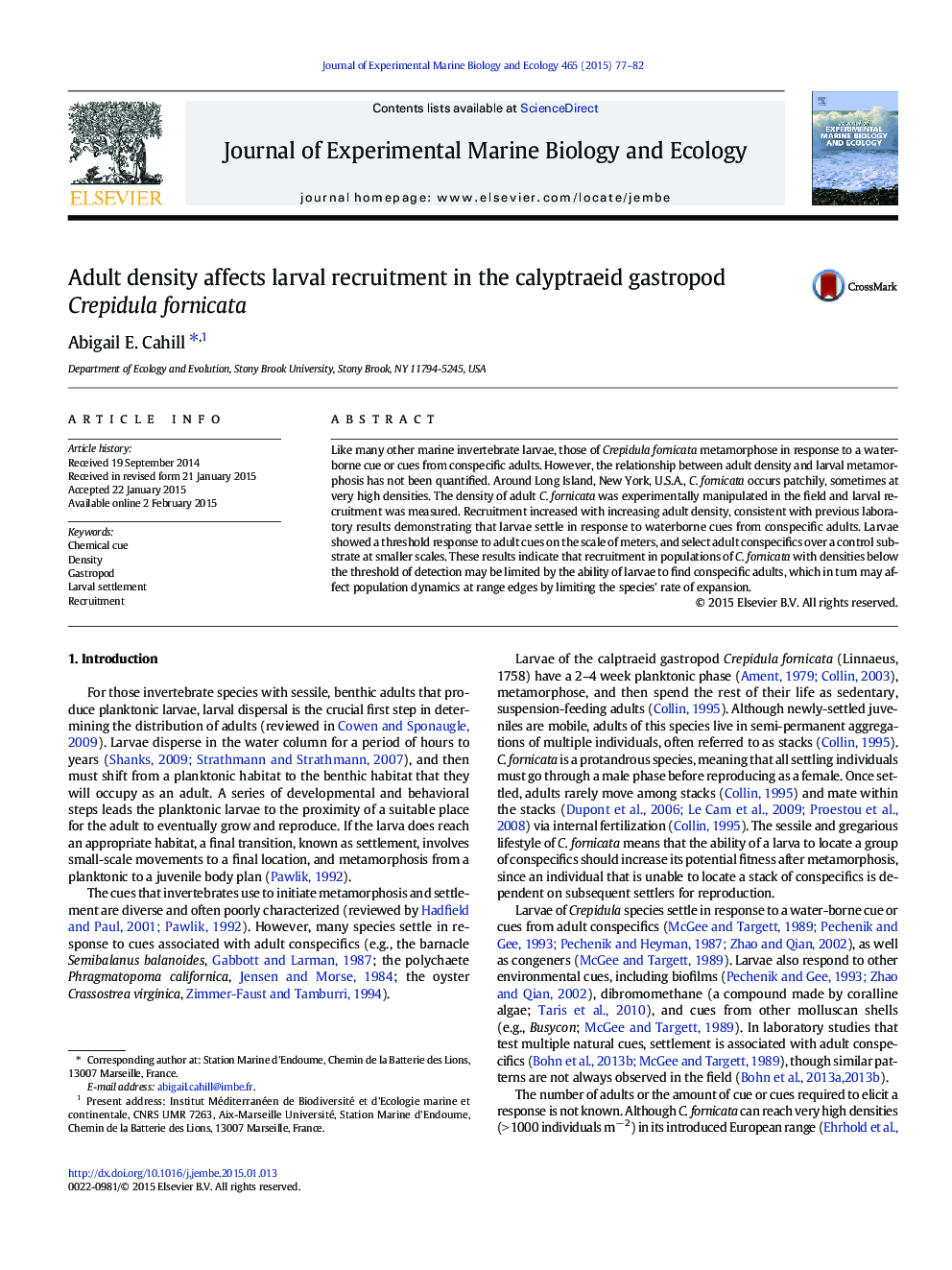| کد مقاله | کد نشریه | سال انتشار | مقاله انگلیسی | نسخه تمام متن |
|---|---|---|---|---|
| 4395513 | 1618410 | 2015 | 6 صفحه PDF | دانلود رایگان |
• C. fornicata larvae settle in response to waterborne cue from conspecific adults.
• Whether and how adult density affects recruitment is unknown.
• Adult density was manipulated and larval recruitment measured.
• Larval recruitment increases with increasing adult density.
• This may cause feedbacks in recruitment locally or at range margins.
Like many other marine invertebrate larvae, those of Crepidula fornicata metamorphose in response to a waterborne cue or cues from conspecific adults. However, the relationship between adult density and larval metamorphosis has not been quantified. Around Long Island, New York, U.S.A., C. fornicata occurs patchily, sometimes at very high densities. The density of adult C. fornicata was experimentally manipulated in the field and larval recruitment was measured. Recruitment increased with increasing adult density, consistent with previous laboratory results demonstrating that larvae settle in response to waterborne cues from conspecific adults. Larvae showed a threshold response to adult cues on the scale of meters, and select adult conspecifics over a control substrate at smaller scales. These results indicate that recruitment in populations of C. fornicata with densities below the threshold of detection may be limited by the ability of larvae to find conspecific adults, which in turn may affect population dynamics at range edges by limiting the species' rate of expansion.
Journal: Journal of Experimental Marine Biology and Ecology - Volume 465, April 2015, Pages 77–82
